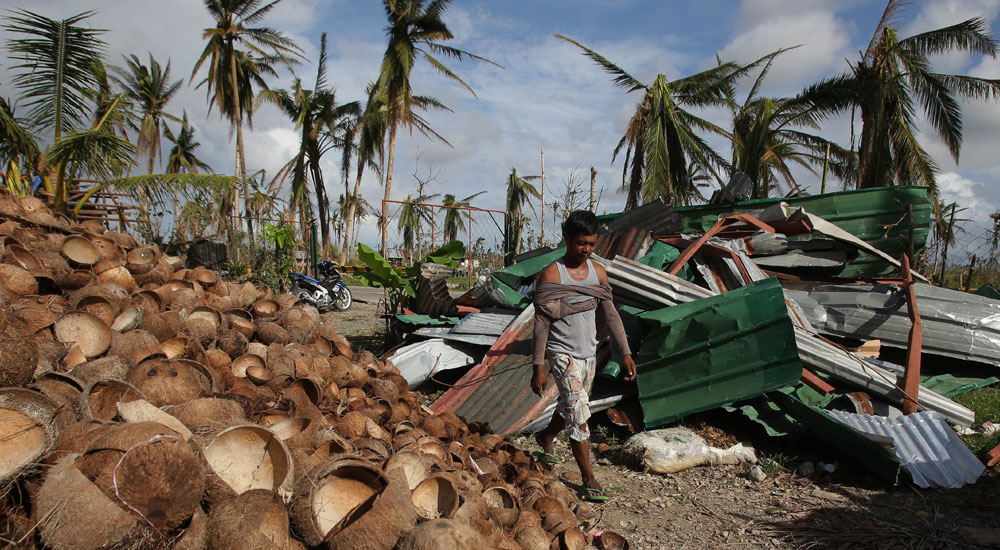PH on UN list of top 5 disaster-prone areas
THE PHILIPPINES, which was hit by at least 274 typhoons and other natural disasters between 1995 and 2015, was one of five countries worldwide that were struck by the biggest number of weather-related calamities during the 20-year period, according to the Geneva-based United Nations Office for Disaster Risk Reduction (UNISDR).
In a report, a copy of which was e-mailed to the Inquirer, the UN agency disclosed that the four other nations were the United States with 472 disasters, China (441), India (288), and Indonesia (163).
The agency noted that “since the first Climate Change Conference in 1995, some 606,000 lives had been lost while 4.1 billion people had been injured, left homeless or in need of emergency assistance as a result of weather-related disasters.”
The UNISDR estimates of economic losses due to disasters, which also include earthquakes and tsunamis, amounted to between $250 billion and $300 billion.
“Asia accounts for the lion’s share of disaster impacts, including 332,000 deaths and 3.7 billion people affected. The death toll in Asia included 138,000 deaths caused by Cyclone Nargis which struck Burma (Myanmar) in 2008,” the report said.
An average of 335 weather-related disasters were recorded per year between 1995 and 2015—an increase of 14 percent and almost twice the level recorded during the period 1985-95.
Storms are deadliest
“Floods accounted for 47 percent of all weather-related disasters from 1995 to 2015, affecting 2.3 billion people and killing about 157,000. On the other hand, storms were the deadliest type of natural disasters, accounting for 242,000 deaths, or 40 percent of the global weather-related deaths with 89 percent of these deaths occurring in lower-income countries,” the report said.
Heat waves accounted for about 148,000 of 164,000 lives lost due to extreme temperatures. Up to 92 percent of heat wave deaths took place in high-income nations with Europe accounting for 90 percent.
“Drought affected Africa more than any other continent with 138 events there between 1995 and 2015, including 77 in East Africa alone,” the report added.
Margareta Wahlstrom, the UNISDR head, noted that “weather and climate are major drivers of disaster risks.”
Dev’t challenge
In a statement, she said “this report demonstrates that the world is paying a high price in lives lost. Economic losses are a major development challenge for many least developed countries battling climate change and poverty.”
“In the long term, an agreement in the coming climate change summit in Paris on reducing greenhouse emissions will be a significant contribution to reducing damage and loss from disasters, which are partly driven by a warming globe and rising sea levels,” she said.
Wahlstrom, who is also UN Secretary General Ban Ki-moon’s special representative on disaster risk reduction, said that “for now, there is a need to reduce existing levels of risk and avoid creating new risk by ensuring that public and private investments are risk-informed and do not increase the exposure of people and economic assets to natural hazards on flood plains, vulnerable low-lying coastlines or other locations unsuited for human settlement.”
Paradigm shift
“The development year started in March with the adoption of the Sendai Framework for Disaster Risk Reduction, a 15-year package endorsed by the UN General Assembly, which sets out clear targets for a substantial reduction in disaster losses, including mortality, the number of people affected, economic losses and damage to critical infrastructure, including schools and hospitals,” she added.
Earlier, Wahlstrom cited the Philippines as one of the most disaster-prone countries in Asia that have made “striking paradigm shifts” in disaster risk reduction and management.
Manila, she pointed out, was “developing more sophisticated methods of gauging the impact of typhoons,” in the aftermath of Supertyphoon “Yolanda” (international name: Haiyan) that devastated Eastern Visayas in November 2013.
“Early warning systems, better disaster preparedness and more efficient response systems are now in place across much of the region, including the Philippines, India, Pakistan and Indonesia,” she added.
